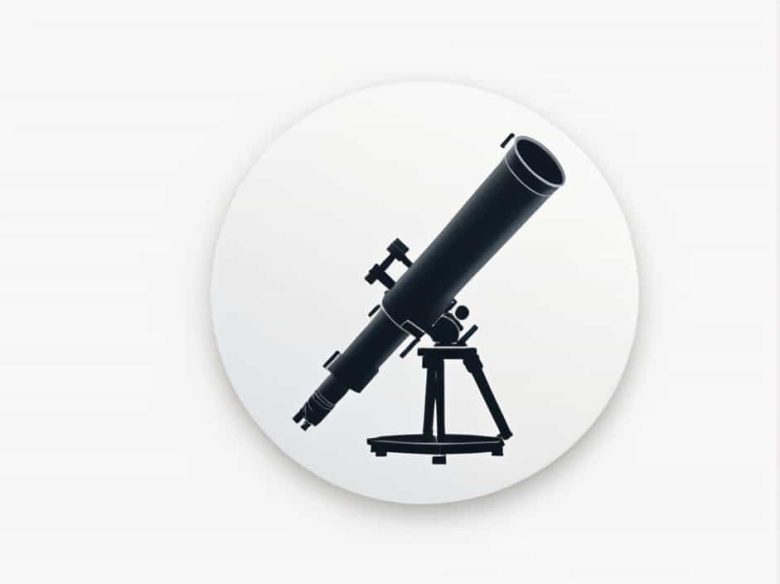Galileo Galilei, a name synonymous with groundbreaking discoveries in the field of astronomy, revolutionized our understanding of the cosmos with his observations through a telescope. His contributions not only challenged long-held beliefs but also paved the way for modern science. Galileo’s telescopic observations changed the way humanity viewed the universe and the position of Earth within it. This topic explores what Galileo saw through his telescope and how these discoveries reshaped our understanding of the cosmos.
The Birth of Telescopic Astronomy
Before Galileo, telescopes were simple instruments used for magnifying distant objects. In 1609, Galileo improved on existing designs and crafted a telescope that allowed him to observe the heavens with remarkable clarity. His discoveries, beginning in 1609, marked the beginning of a new era in astronomy.
Galileo’s Telescopic Advancements
Galileo’s telescope had a magnification of around 8x, which, for the time, was a remarkable improvement. He used this instrument to observe the night sky, unveiling celestial phenomena that had never been seen before.
Unlike earlier astronomers, Galileo didn’t just look at the stars. He studied the moon, planets, and other celestial bodies in great detail. What he observed challenged prevailing views of the universe and led to the popularization of the heliocentric model proposed by Copernicus.
Key Discoveries Made by Galileo Through His Telescope
1. The Moon’s Surface: A Rocky Terrain
One of Galileo’s earliest and most influential discoveries was his observation of the Moon’s surface. Before Galileo, the Moon was thought to be a smooth, perfect sphere, in keeping with the ancient belief that celestial bodies were flawless.
Through his telescope, Galileo saw a surface pocked with craters, mountains, and valleys. He described the Moon as “rough” and “uneven,” which challenged the Aristotelian idea of perfection in the heavens. This discovery was one of the first pieces of evidence against the geocentric model, which held that everything in the heavens was perfect and unchanging.
The Importance of the Moon’s Surface Observations
Galileo’s observations of the Moon helped to advance the understanding that celestial bodies were not perfect, as the Greeks and later astronomers had believed. His work laid the groundwork for future studies in planetary science.
2. The Moons of Jupiter: A Revolutionary Discovery
In 1610, Galileo turned his telescope toward Jupiter and made an astonishing discovery: four moons orbiting the giant planet. These moons, now known as the Galilean moons, include Io, Europa, Ganymede, and Callisto. This was the first observation of moons orbiting a planet other than Earth, a critical discovery that supported the heliocentric theory of the solar system.
The Significance of Jupiter’s Moons
Galileo’s observation of Jupiter’s moons provided strong evidence against the geocentric model, which posited that everything, including the planets, orbited the Earth. The fact that Jupiter had its own moons orbiting it suggested that not everything revolved around Earth. This was a key challenge to the established understanding of the cosmos.
3. The Phases of Venus: Confirmation of the Heliocentric Model
Galileo also made a groundbreaking discovery about Venus. He observed that Venus went through phases similar to the Moon’s, ranging from a crescent shape to a full disk. This observation provided further support for Copernicus’s heliocentric model, which proposed that the planets, including Earth, orbit the Sun.
Why Venus’s Phases Were Crucial
The phases of Venus were a clear indication that Venus orbited the Sun, not the Earth. If Venus were to orbit Earth, it would not display the same phases. This discovery directly contradicted the geocentric view, reinforcing the idea that the Sun was the center of the solar system and that the Earth was not at its center.
4. The Sun’s Spots: A New Perspective on the Sun
In 1610, Galileo also observed sunspots, dark patches on the Sun’s surface. These were not just blemishes but signs that the Sun was not perfect, which went against the Aristotelian belief in the perfection of celestial bodies.
Impact of the Sunspot Observations
The discovery of sunspots suggested that the Sun was a dynamic, changing body, not a flawless, unchanging object. This finding provided additional evidence for the idea that the heavens were not immutable and that celestial bodies could evolve and change over time.
5. The Milky Way: A Collection of Stars
Galileo’s telescope also allowed him to examine the Milky Way, which, until then, had been considered a cloudy, nebulous object. Through his telescope, Galileo observed that the Milky Way was actually composed of countless individual stars, much to the surprise of the astronomical community.
Significance of the Milky Way Observation
This discovery demonstrated the vastness of the universe and the existence of a large number of stars beyond what was previously visible to the naked eye. Galileo’s observations helped to expand our understanding of the cosmos and set the stage for the study of galaxies and the universe at large.
The Scientific and Cultural Impact of Galileo’s Telescopic Discoveries
Galileo’s discoveries fundamentally transformed our understanding of the universe. They undermined the geocentric model, which placed Earth at the center of the universe, and supported the heliocentric model, which placed the Sun at the center.
His observations provided crucial evidence that the Earth was not the center of the universe, challenging religious and philosophical beliefs of the time. This was particularly controversial in the Catholic Church, which held the geocentric model as part of its teachings. Galileo’s findings eventually led to a conflict with the Church, and he was tried by the Inquisition and forced to recant his support for the heliocentric model.
Despite this, Galileo’s work laid the foundation for future astronomers, including Kepler, Newton, and Einstein, who would further develop our understanding of the cosmos.
Galileo’s telescopic observations were a pivotal moment in the history of science. He observed the Moon’s surface, discovered Jupiter’s moons, witnessed the phases of Venus, documented sunspots, and revealed the true nature of the Milky Way. These observations changed the course of astronomy, challenging long-held beliefs and confirming the heliocentric model of the solar system. Galileo’s contributions to science were immeasurable, and his work continues to inspire and shape our understanding of the universe today.



